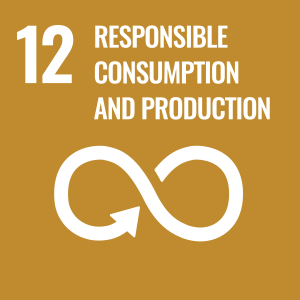
Gul Hameed
Academic and research departments
School of Chemistry and Chemical Engineering, Faculty of Engineering and Physical Sciences.About
Gul Hameed is a PhD candidate at the University of Surrey. He holds a BS degree in mechanical engineering from the Pakistan Institute of Engineering and Applied Sciences and an MSc in renewable energy systems engineering from the University of Surrey. Previously, Gul’s research spanned thermal energy storage via phase change materials during his undergraduate studies and catalyst development for the reverse water-gas shift process as a research assistant during his master's program. He also worked on developing energy planning models to achieve net zero targets as a part of his master's research. His research interests cover decarbonising process systems, developing algorithms (using machine learning, surrogate modelling, deterministic optimisation theory, and derivative-free optimisation) for green processes, low-carbon/carbon-neutral chemical and fuel production, and exploring sustainable energy systems.
University roles and responsibilities
- Research assistantship in various projects; 1) CO2 Hydrogenation Project (Completed), 2) Supporting ASEAN Energy Decarbonisation through Bespoke Decision-support Software (Completed), and 3) Energy Planning in Brazil (Ongoing).
My qualifications
Affiliations and memberships
SIAM Activity Group on Optimisation - Member
ResearchResearch interests
- Decarbonising process systems
- Development of algorithms (using trust-region method, surrogate modelling, and optimisation) for green processes and low-carbon/carbon-neutral chemical/fuel production
- Mixed-integer non-linear programming (MINLP) optimisation
- Non-linear programming (NLP) optimisation
- Exploration of sustainable energy systems
Research projects
Development of trust-region filter algorithm for grey-box optimisation using surrogate modelling and optimisation theory
Research interests
- Decarbonising process systems
- Development of algorithms (using trust-region method, surrogate modelling, and optimisation) for green processes and low-carbon/carbon-neutral chemical/fuel production
- Mixed-integer non-linear programming (MINLP) optimisation
- Non-linear programming (NLP) optimisation
- Exploration of sustainable energy systems
Research projects
Teaching
- Heat Transfer and Laboratory (ENG2121) - Lab Demonstration, Semester 1 (2023/24)
- Advanced Pharmaceutical Formulations (CHEM042) - Teaching Assistant, Semester 1 (2024/25)
- Pilot Plant Module (CHEM046) - Plant Manager and Teaching Assistant, Semester 1 (2025/26)
Sustainable development goals
My research interests are related to the following:







Publications
An electricity modelling study is presented to support the decarbonisation of the power sector in Mauritius. The gaps in literature that this study aims to address are the insufficient evidence of systematic modelling in the country's electricity transition strategies, outdated targets in existing modelling studies, limited long-term climate ambitions and the under-representation of the impact of vehicle electrification on electricity planning. Hence, a techno-economic optimisation model is developed to explore three long-term (2025–2050) scenarios in the power sector of Mauritius. Scenario A reflects the current policy ambition, aligning with the Nationally Determined Contribution (NDC) targets of achieving 60 % of renewable energy in the electricity by 2030. Scenario B models a pathway to achieve net-zero emissions in the power sector by 2050 and scenario C builds on Scenario B by incorporating widespread electrification of the transport sector. The potential of switching heavy fuel oils with alternative liquid fuels is also explored in all scenarios. The modelling is conducted using a mixed-integer linear programming optimisation tool, the DECarbonisation Options Optimisation (DECO2). Results indicate that carbon emissions drop by almost 50 % if coal is replaced with biomass. Furthermore, a 100 % renewable energy grid is achievable with alternative liquid fuels generating around 1200 to 1500 GWh of electricity. In the case of net-zero emissions, 28 % of electricity can still be produced using fuel oils only if negative emission technologies (NETs) are deployed. Additionally, the electrification of transport is found to have significantly affected the electricity generation capacity. While the modelled system can meet a demand from electric vehicles of up to 400 GWh per year by the year 2050, the flexibility of choosing between the technologies reduces and expensive generation options need to be deployed. This electricity system modelling study aims at supporting policy decisions in national electricity grid planning in Mauritius.
The Association of Southeast Asian Nations (ASEAN) region consists mostly of developing countries experiencing rapid economic growth and industrialisation, resulting in rising energy demand primarily met using fossil fuels. Emissions abatement technologies and economic instruments like carbon trading are pivotal in transitioning towards a low-carbon trajectory. Despite its status as a major ASEAN economy, the Philippines has yet to set a net-zero emissions target to achieve climate goals established under Paris Agreement. This study compares two policy-based transition pathways for the Philippines' Luzon power grid to achieve net-zero emissions by 2054, integrating a domestic emissions trading system into a long-term optimisation framework, and assessing their economic viability, policy alignment, and technological feasibility. Using mixed-integer nonlinear programming (MINLP) version of the DECarbonisation Options Optimisation (DECO2) software, two scenarios are simulated: NZES-I, without carbon capture and storage (CCS) retrofit in fossil plants, and NZES-II, with CCS retrofit. Both scenarios integrate renewables, alternative fuels, negative emission technologies (NETs), and a multi-stage carbon trading mechanism. The results show that NZES-II achieves lower electricity prices, improved alignment with national renewable energy targets, and optimal utilisation of the Philippines’ limited carbon storage capacity (32 % below the storage limit of 251 Mt CO2-eq). By 2050–2054, carbon trading revenues exceed $40 billion/y in NZES-II, surpassing the investment required for renewables and emission reduction technologies. In contrast, NZES-I reaches net-zero but falls short on renewable targets and incurs higher electricity prices due to its greater dependence on costly NETs. The study highlights the critical role of integrated carbon trading, CCS, and policy alignment in achieving net-zero emissions, and provides a policy-informed roadmap for the Philippines and comparable economies to achieve net-zero while ensuring economic resilience and energy security under realistic constraints.
This study integrates scalable carbon trading models into an energy planning framework to address carbon emissions challenge associated with increasing energy consumption in emerging economies. The models utilise mixed-integer nonlinear programming (MINLP) formulations to optimise power generation, emissions, and costs. A case study is demonstrated on an ASEAN (Association of Southeast Asian Nations) country, Malaysia. Results reveal that carbon trading enhances both financial gains and environmental sustainability, with direct optimisation (where emission rights or carbon prices are variables) approach proving more effective in maximising carbon markets’ efficacy, leading to better cost to emission ratios when compared to indirect optimisation (with emission rights prices as parameters, estimated via demand-supply curve). For emissions minimisation, direct optimisation resulted in cost to emissions ratios about 1.3 to 2.1 times more than those for indirect optimisation for three out of four studied periods. The study highlights the potential of coordinated emissions trading and optimal investment decision-making, providing valuable insights for energy planning in Malaysia which is aiming for net-zero target by year 2050.
Silica-supported nickel phosphide catalysts with varying Ni/P atomic ratios (12/5, 2, 1, and 0.5) and 15 wt.% Ni-loading are synthesized. The synthesized catalysts are calcined and subjected to Temperature Programmed Reduction (TPR) analysis to evaluate Hydrogen consumption. Pre-reaction X-ray diffraction (XRD) analysis is performed on all calcined samples after reduction and passivation. The reduced catalysts are tested for the reverse water-gas shift reaction and post-reaction XRD analysis is performed on them. Stability tests are conducted on catalysts with Ni/P atomic ratios of 12/5 and 2, followed by XRD analysis of post-stability samples. The elemental composition of the catalysts at each stage is evaluated via inductively coupled plasma mass spectroscopy (ICP-MS) analysis. All experimental data is made available for re-use through this platform.
Nickel phosphide catalysts show a high level of selectivity for the reverse water-gas shift (RWGS) reaction, inhibiting the competing methanation reaction. This work investigates the extent to which suppression of methanation can be controlled by phosphidation and tests the stability of phosphide phases over 24-hour time on stream. Herein the synthesis of different phosphide crystal structures by varying Ni/P atomic ratios (from 0.5 to 2.4) is shown to affect the selectivity to CO over CH 4 in a significant way. We also show that the activity of these catalysts can be fine-tuned by the synthesis Ni/P ratio and identify suitable catalysts for low temperature RWGS process. Ni 12 P 5-SiO 2 showed 80–100% selectivity over the full temperature range (i.e., 300–800 • C) tested, reaching 73% CO 2 conversion at 800 • C. Ni 2 P-SiO 2 exhibited CO selectivity of 93–100% over a full temperature range, and 70% CO 2 conversion at 800 • C. The highest CO 2 conversions for Ni 12 P 5-SiO 2 at all temperatures among all catalysts showed its promising nature for CO 2 capture and utilisation. The methanation reaction was suppressed in addition to RWGS activity improvement through the formation of nickel phosphide phases, and the crystal structure was found to determine CO selectivity, with the following order Ni 12 P 5 >Ni 2 P > Ni 3 P. Based on the activity of the studied catalysts, the catalysts were ranked in order of suitability for the RWGS reaction as follows: Ni 12 P 5-SiO 2 (Ni/P = 2.4) > Ni 2 P-SiO 2 (Ni/P = 2) > NiP-SiO 2 (Ni/P = 1) > NiP 2-SiO 2 (Ni/P = 0.5). Two catalysts with Ni/P atomic ratios; 2.4 and 2, were selected for stability testing. The catalyst with Ni/P ratio = 2.4 (i.e., Ni 12 P 5-SiO 2) was found to be more stable in terms of CO 2 conversion and CO yield over the 24-hour duration at 550 • C. Using the phosphidation strategy to tune both selectivity and activity of Ni catalysts for RWGS, methanation as a competing reaction is shown to be no longer a critical issue in the RWGS process for catalysts with high Ni/P atomic ratios (2.4 and 2) even at lower temperatures (300–500 • C). This opens up potential low temperature RWGS opportunities, especially coupled to downstream or tandem lower temperature processes to produce liquid fuels.
A dependable and sustainable energy supply is crucial as energy consumption continues to rise due to population growth, economic development, and improved living standards. The use of fossil fuels leads to CO2 emissions and are subject to volatility in prices. Capital-intensive technologies to reduce emissions are challenging to implement on a practical scale, and economic instruments are likely to play a role in future energy systems by encouraging adoption of these technologies. Carbon trading is an emerging economic instrument that enables entities (plants, governments, etc.) to exchange emission rights, allowing economic and environmental aspects to be balanced. This study introduces a scalable carbon trading modelling approach, integrated into previously developed DECO2 open-source energy planning framework. Direct and indirect optimisation approaches are proposed, both consisting of superstructure-based mixed-integer nonlinear programming formulations. Carbon price is a variable in the direct optimisation or a parameter in the indirect optimisation approach. While the direct optimisation approach involves more non-linearity, it is shown to result in solutions with greater decarbonisation, higher profits, and lower costs, compared to the indirect optimisation results. A novel feature of this multi-period model not considered in previous works is the simultaneous emissions trading across time periods and among entities (power plants and government). This enables efficient and coordinated emission allowances trading among various entities and timeframes. Various new costs and revenue streams are added into the energy planning framework; therefore, profits can also be predicted, along with predictions of electricity prices. New energy resources (nuclear and wind) and carbon capture utilisation and storage are also introduced to the modified DECO2 model. The models are tested on the Pakistan’s power sector. Minimisation of emissions using direct optimisation showed that the carbon trading increased profits significantly in the second, third, and fourth planning periods (4.74, 3.86, and 3.55 times, respectively), but in the first period, profits were slightly higher without carbon trading (1.06 times more). Minimisation of budget using indirect optimisation showed higher profits in case of no carbon trading for all the periods. Between 2021 and 2040, hydropower is expected to grow the most (by a minimum of 3.14 times and a maximum of 15.87 times), followed by solar (with an expected increase between 2.54 and 3.26 times) and wind generation (which may increase by 2.35 to 2.66 times). Deployment of emission reduction technologies is significantly lower when carbon trading is implemented as compared to when it is not, due to increased pressure on CO2-intensive generation. Results show that incorporating carbon trading into an energy market leads to both financial (increased profits) and environmental (lower emissions) sustainability, and that using direct optimisation approach increases benefits of carbon markets.
These datasets are generated using a modified version of the DECO2 software and contain detailed optimization results for Pakistan's power sector, which includes 208 power plants, over the planning period of 2021-2040. The '1 - Min_Emission_CT_OFF.xlsx' file provides the optimized results for emissions minimization without carbon trading, while the '2 - Min_Emission_CT_ON_Direct_Optimization.xlsx' file contains the results for emissions minimization with carbon trading. Similarly, the '1 - Min_Budget_CT_OFF.xlsx' file lists the optimized results for budget minimization without carbon trading, while the '2 - Min_Budget_CT_ON_Indirect_Optimization.xlsx' file contains the results for budget minimization with carbon trading.
Latent heat based thermal energy storage technology is quite promising due to its reasonable cost and high energy storage capacity. This technology is partially developed. The accelerated transition from non-renewable to renewable energy sources have attracted researchers to shift their focus towards demonstrating thermal energy storage utilizing latent heat at commercial level. Phase change materials utilizing latent heat can store a huge amount of thermal energy within a small temperature range i.e., almost isothermal. In this review of low temperature phase change materials for thermal energy storage, important properties and applications of low temperature phase change materials have been discussed and analyzed. Thermal energy storage technologies are compared in terms of technology readiness levels. Various techniques to improve the heat transfer characteristics of thermal energy storage systems using low temperature phase change materials have also been discussed. Moreover, the use of computational techniques to assess, predict and optimize the performance of the latent energy storage system for different low temperature applications is also presented. In this article, researchers and domestic energy management sector will find comprehensive guidelines for the performance improvement and technology selection for energy management via thermal energy storage.
